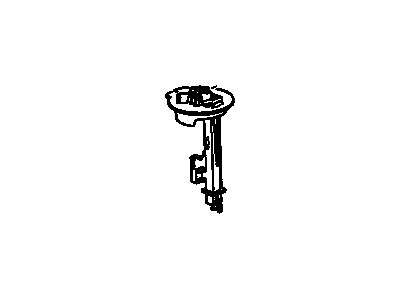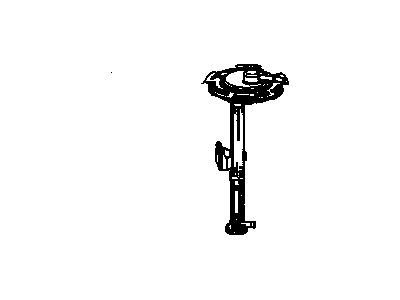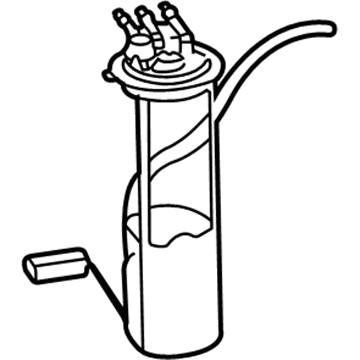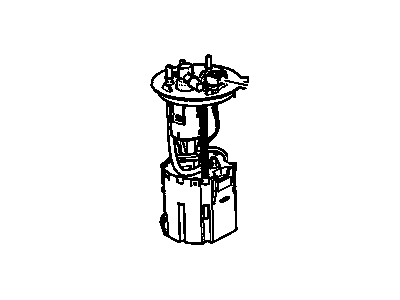
My Garage
My Account
Cart
Genuine Saturn Vue Fuel Pump
Gas Pump- Select Vehicle by Model
- Select Vehicle by VIN
Select Vehicle by Model
orMake
Model
Year
Select Vehicle by VIN
For the most accurate results, select vehicle by your VIN (Vehicle Identification Number).
6 Fuel Pumps found
Saturn Vue Fuel Pump Kit
Part Number: 20793416$134.42 MSRP: $253.62You Save: $119.20 (47%)Ships in 1-2 Business DaysSaturn Vue Fuel Pump Kit
Part Number: 19207459$151.87 MSRP: $310.72You Save: $158.85 (52%)Ships in 1-2 Business DaysSaturn Vue Fuel Pump Cycle Control Module Kit(W/O Fuel Level Sensor)
Part Number: 15867656$192.15 MSRP: $362.54You Save: $170.39 (47%)Ships in 1-3 Business Days
Saturn Vue Fuel Pump
The Fuel Pump in Saturn Vue vehicles is instrumental in pumping fuel from the tank to the car's engine carburetor or the fuel injector system. Where FI (fuel injection) is employed, electric pumps are generally located in the tank while, in carburetted models, mechanical pumps are installed outside. Mechanical pumps can produce up to 15psi but they are rarely used today because pumps that work at a higher pressure (40-60 psi or more) provide benefits of cooling and safety, which are offered by electric pumps. Fuel pumps in latest models of Saturn Vue are managed electronically by way of fuel electronic control units at driver's seat control. They may also use pulse-width modulation to increase the product's life and decrease the energy it draws. Other arrangements such as the high pressure diesel pump and high pressure direct injection pump to keep the fuel pressure constant to enhance the performance of the engines and to minimize emissions.
Each OEM Saturn Vue Fuel Pump we offer is competitively priced and comes with the assurance of the manufacturer's warranty for the part. Furthermore, we guarantee the speedy delivery of your orders right to your doorstep. Our hassle-free return policy is also in place for your peace of mind.
Saturn Vue Fuel Pump Parts Questions & Experts Answers
- Q: What does the fuel pump operation check involve on Saturn Vue?A:Fuel pump operation check consists of listening for the sound of the fuel pump when the ignition key is turned to the ON position. Turning on the fuel pump fuse in case it doesn't come on, examining the condition of relay and wiring are ways to check this. In case all these are right, either the fuel pump may be defective or PCM can be faulty. To test the fuel pressure one could use a gauge that connects to Schrader valve test port found on Fuel Rail. The fuel pressure must be within specifications; if not, it indicates that probably there is a clogged filter, some blockage in the system or perhaps a bad fuel pump module. The engine should lose no more than 8 psi during 5 minutes after being turned off, anything more could mean that there is a leaky injector, leakage from a fuel line or in fact an incorrect functioning check valve in the fuel pump module. Lastly, always ensure there are no gas leaks before starting the engine.
- Q: How to remove and install a Fuel Pump on Saturn Vue?A:Detach the cable from the negative battery terminal. Relieve the fuel system pressure. Remove the Fuel Tank from the vehicle. For 2004 and later models, disconnect the EVAP hose quick-connect fitting on the top of the secondary fuel tank module. Mark the position of the lock ring. Use a large pair of water pump pliers to remove the fuel tank module lock ring. If it won't break loose, tap it with a hammer and a brass punch to avoid sparks. Disconnect electrical connector from the unit, then push down on the tab near the base of the module to release the suction port tube, then carefully pull the module out of the tank. Inspect the 0-ring and replace it if it shows any sign of deterioration. Installation is the reverse of removal. For all other fuel tank modules, disconnect all the electrical connectors from the module and pressure sensor. Use a large pair of water pump pliers to remove the fuel tank module lock ring. If it won't break loose, tap it with a hammer and a brass punch to avoid sparks. Release the lines from the top of the fuel tank. Carefully remove the module from the fuel tank. Inspect the 0-ring and replace it if it shows any sign of deterioration. Installation is the reverse of removal.












